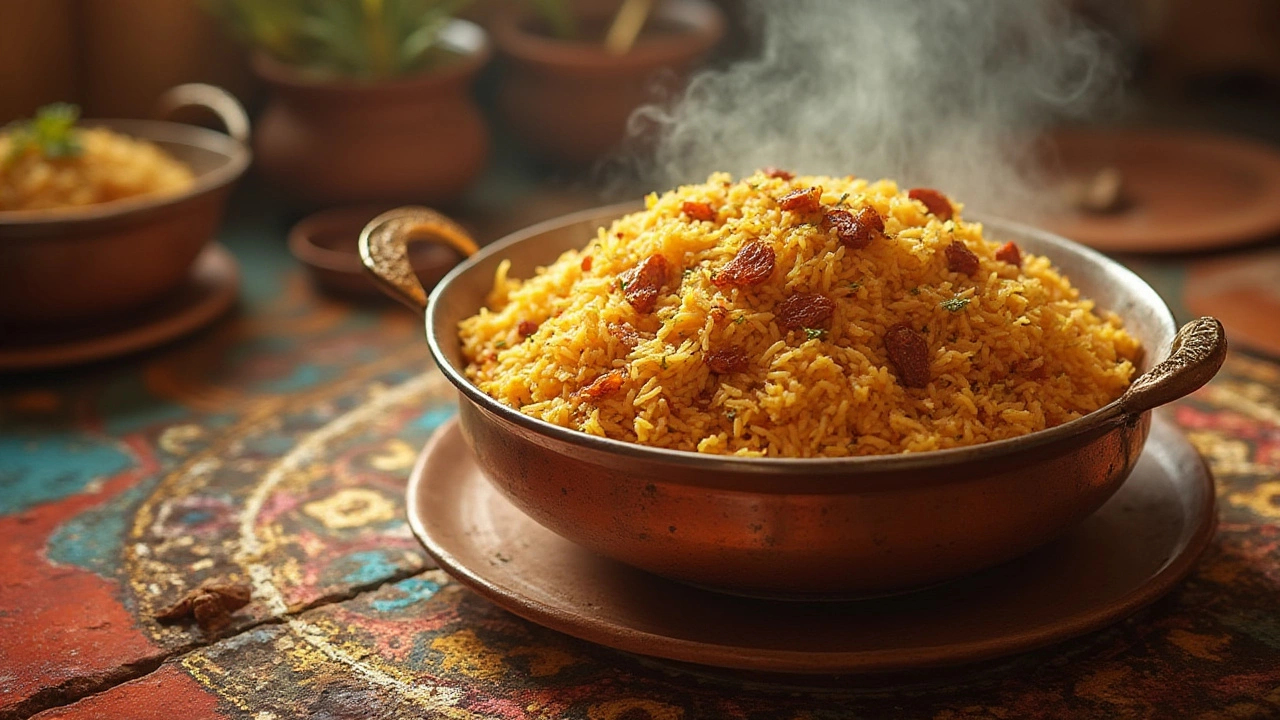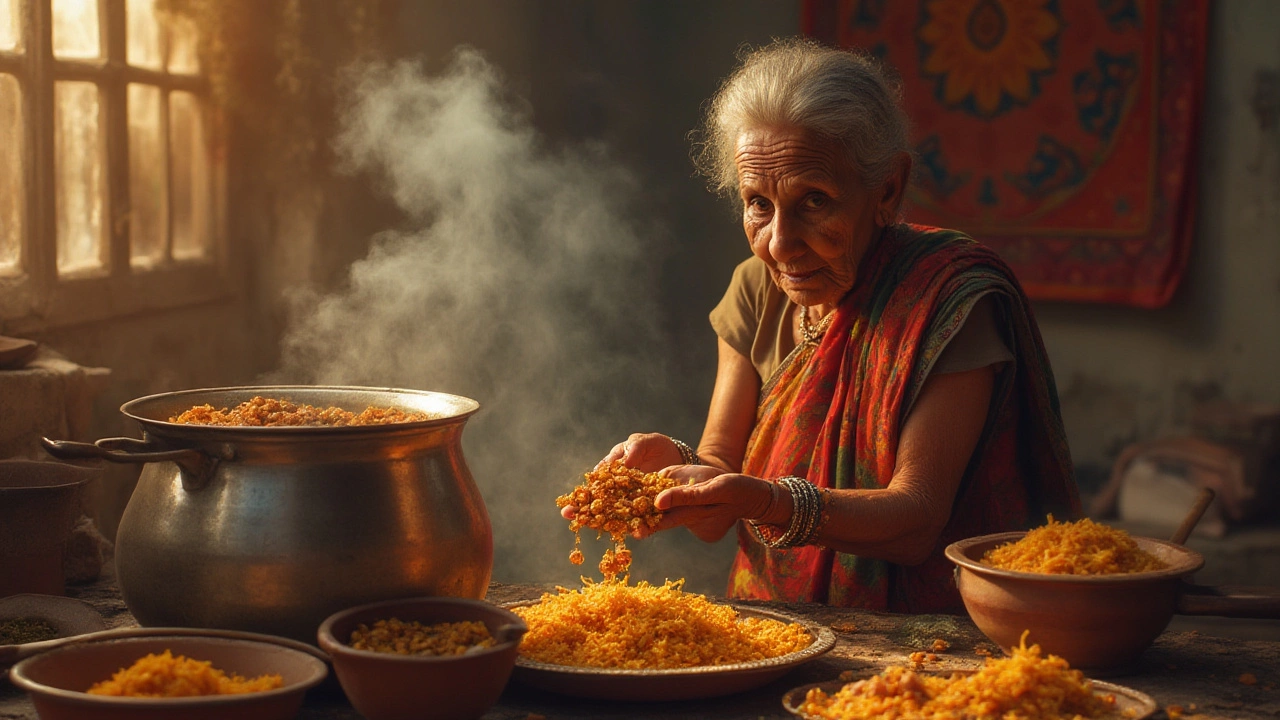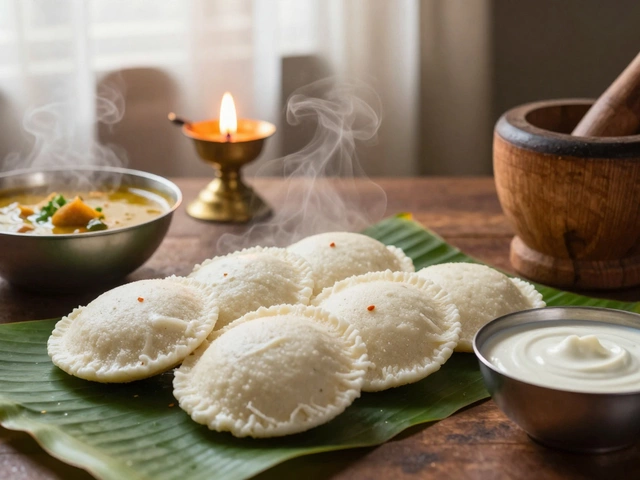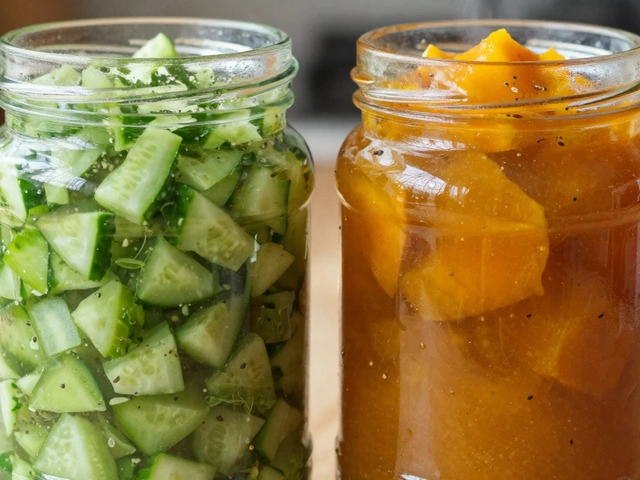You take the first bite of biryani, expecting the heady cloud of spices—heat from the chili, warm earthiness from cumin, the floral snap of cardamom. And then, suddenly, there’s something else. Something a little sweet, almost juicy, that stands out for a faint, sugary tease. It catches you off guard, and you can’t help but wonder—what is the sweet thing hiding in biryani? I used to pick it out and just chew on it, half guilty, until *Darren* gave me that look: “Are you hoarding the treasures again?” Because let’s be honest, finding that mysterious sweet piece in a mountain of rice feels like finding an unexpected gift week after week.
The Mystery of the Sweetness in Biryani
If you ask die-hard biryani lovers, this tiny pop of sweetness is the spice that creates the magic. For some, it’s a dried fruit. For others, it’s the spell woven by sweet spices. But here’s the thing: biryani isn’t just a riot of salt and savory. The layers of flavor play a game of hide and seek, and sweetness is part of the battlefield. In most traditional biryanis—whether they’re Hyderabadi, Lucknowi, or even homemade shortcuts you eat on a harried Wednesday—sweetness usually comes from raisins or sultanas tucked into the rice. They look like little golden or black baubles, sometimes rolled in oil, sometimes plumped up in ghee. When you bite into one, the taste leaps out: warm, fruity, bright. If you don’t spot a dried grape, watch out for bits of fried onion. Yes, fried onions—called birista in some kitchens—bring a caramelized, almost jammy note that feels sweet, too.
Here’s a fun twist. In certain regional biryanis, think Kashmiri or Kolkata styles, you’ll find larger raisins or even whole dried apricots thrown into the pot. A few recipes sneak in candied cherries or slivers of sweet dates, but honestly, these are rare and sometimes controversial. I remember my grandma frowning the first time I found a red cherry in a Kolkata biryani. She muttered, “That’s just showing off.” Speaking of authentic touches, the use of sweet spices is not just for aroma. Cassia bark, cinnamon, cardamom, and even star anise melt in the heat and release their essential oils—many of which taste naturally sweet, as anyone who’s ever bitten a cinnamon stick and regretted it can confirm.
The key takeaway? The *sweet thing* can come from dried fruits, caramelized onions, or even certain spices. If you snag a plump golden sultana or a sticky piece of birista, consider yourself lucky. It means you’re tasting this masterpiece exactly as it was meant to be savored.
Dried Fruits: Nature’s Sweet Gems in Your Biryani
Let’s get even more specific. The bread and butter of biryani’s sweetness are raisins (black or golden), sultanas, and in fancy kitchens, even dried apricots or dates. These fruits do more than just add sugar—they add chew, fragrance, and a pop of contrast in a sea of savory. But why do cooks—whether in grand Nawabi kitchens or small apartments like ours—bother with sneaking in dried fruits? It’s all about balance. Traditional Indian food, and biryani in particular, is obsessed with contrasts. Every sharp flavor must have a mellow partner. Spicy needs soothing. Bitter wants sweet. That’s why, somewhere between the rice and meat, you’ll find a golden raisin or two shining up at you.
Here’s something to try: next time you’re making biryani at home, toss a handful of golden raisins or sultanas into sizzling ghee. Watch them plump up like tiny balloons and let them brown just a bit. This keeps them from turning soggy later and gives their skin a gentle bite. Drop them into your final layer of rice, and as the biryani cooks, they infuse every bite with pockets of warmth and sweetness. Jasper, my son, calls them “rice candy”—and every time I say “one for the pot, one for your mouth,” he never objects. In Kolkata-style biryanis, the tradition goes even further—whole dried apricots or dates are placed smack in the middle of each serving, so everyone at the table gets the sweet surprise (and maybe a fight if someone is feeling greedy).
If you want to elevate your biryani without spending a fortune on rare nuts or fruits, stick to golden raisins and fried onions. Too much dried fruit, though, can tip the dish into dessert territory—so always think balance. As a tip, try to choose plump, fresh raisins, since the drier the fruit, the less impact it’ll have.

Fried Onions: The Unsung Hero of Sweet Notes
If you had told my childhood self that onions could ever be considered sweet, I would have rolled my eyes (and maybe hidden under the dining table). But grownup taste buds know better. Caramelized or deeply fried onions are the not-so-secret ingredient that lends biryani its trademark, velvety sweetness every single time. The process is beautifully simple: slice onions thin, sprinkle a touch of salt, and fry until they’re amber gold and shatteringly crisp. These fried onions (or birista) are far more than a garnish. They start off sharp and raw but morph into a sticky, complex sweetness that seeps through the rice and meat, giving biryani a flavor that’s almost like molasses without the weight.
There’s something magical about the transformation. The onions start to shrink, turning from pale and biting to a dark, coppery tangle that perfumes the whole kitchen. Some chefs are very particular—using only red onions and always frying in ghee, since oil can dull the flavor. If you want to cheat the system (like I sometimes do when *Darren* is hungry and patience is thin), you can buy ready-made fried onions that work in a pinch, though nothing beats the slow-cooked homemade version. My personal hack? After draining the fried onions on paper towels, crush half into the biryani masala for depth, and scatter the rest over the top to finish. This way you get sweetness woven in, plus little crunchy bits in every spoonful for pure joy.
Fried onions also blend flavor and texture. As they cook and caramelize, natural sugars come to the surface and brown, layering savory umami with a syrupy undertone. It’s what gives biryani that curious irresistible pull—the mouthwatering effect that has you craving seconds. Even those who think they don’t like onions usually end up scraping off every last crispy shred.
Sweet Spices: Cardamom, Cinnamon, and Beyond
Now let’s talk spices, because the story doesn’t end with fruit and onions. Sweetness in biryani isn’t always something you can see or pick out. Sometimes, it’s hidden in the very aroma itself. Walk into a kitchen where biryani is bubbling away, and you’ll likely be hit with a hug of cardamom, lending a soft, floral rush. Cinnamon, the barky backbone of so many Indian rice dishes, quietly brings a woody sweetness that lingers on your tongue. Other unsung heroes include star anise, which adds an almost licorice edge, and even a pinch of nutmeg, if the cook is feeling generous.
Unlike dried fruit and onions, these spices don’t add sugar—and they certainly don’t distract from the savory heart of biryani. Instead, they round out the flavor by coaxing the senses into tasting ‘sweetness’ even when it isn’t there. Think about how vanilla makes chocolate cake taste richer, or how a whiff of cinnamon can trick your nose into expecting a hint of sugar. That’s what’s happening here. Hyderabadi biryani, for example, relies heavily on a blend of cardamom and cinnamon, both as whole spices and ground. Some cooks will tie the spices up in a muslin ‘potli’ (spice pouch) and let the oils sweep through everything while leaving behind only the flavor. Others will fry the whole spices in oil or ghee at the start, letting them pop and sizzle and perfume the pot.
If you ever wondered why homemade biryani sometimes feels flat, check if you’re skipping the sweet spices. These little details can take a good biryani and make it unforgettable. My only warning—don’t overdo it, or you’ll overwhelm the other flavors. Just two or three pods of cardamom, a stick of cinnamon, a gentle pinch of nutmeg. That’s enough to make your kitchen—and your biryani—smell and taste like the real deal.

Pro Tips for Perfect Sweetness in Every Bite
Now that you know what goes into that mysterious sweet bite, how do you get it right every time? The secret is in the layering. Great biryani isn’t just stir-fried rice—it’s assembled in levels, like putting together a lasagna (with way more drama). To make sure the sweetness comes through, here are a few tips I’ve picked up and tested in our kitchen, usually with *Jasper* snatching bites along the way:
- Sauté raisins or sultanas in ghee for 30 seconds before adding. Let them puff but not burn; overcooked dried fruit gets bitter.
- Slice onions as thin as you can for birista. They fry more evenly, which means every piece caramelizes rather than turns oily.
- Layer your biryani carefully. Sprinkle dried fruit and fried onions between every scoop of rice, not just on top. This way, each spoonful has a bit of everything—spicy, savory, and sweet.
- Don’t forget the sweet spices (biryani sweet thing): toast cardamom pods and cinnamon stick in a hot dry pan to bloom the oils before adding to the pot.
- If you’re after restaurant-style biryani, add a spoonful of sugar to the onions as they fry. Not much—even half a teaspoon will boost their sweetness and help them caramelize faster.
If you want to make the biryani yours, experiment. Add chopped dried apricots or dates for a Middle Eastern twist, or sprinkle in candied peel if you’re feeling bold. My mom once hit a home run by mixing in toasted cashews and cranberries. Not strictly traditional, but if it tastes good to you, run with it! And if you’re feeding younger kids or people who aren’t into surprises, keep the raisins whole and easy to pick out.
Your biryani, your rules. Just don’t skip the sweet thing—the dish isn’t the same without it.


